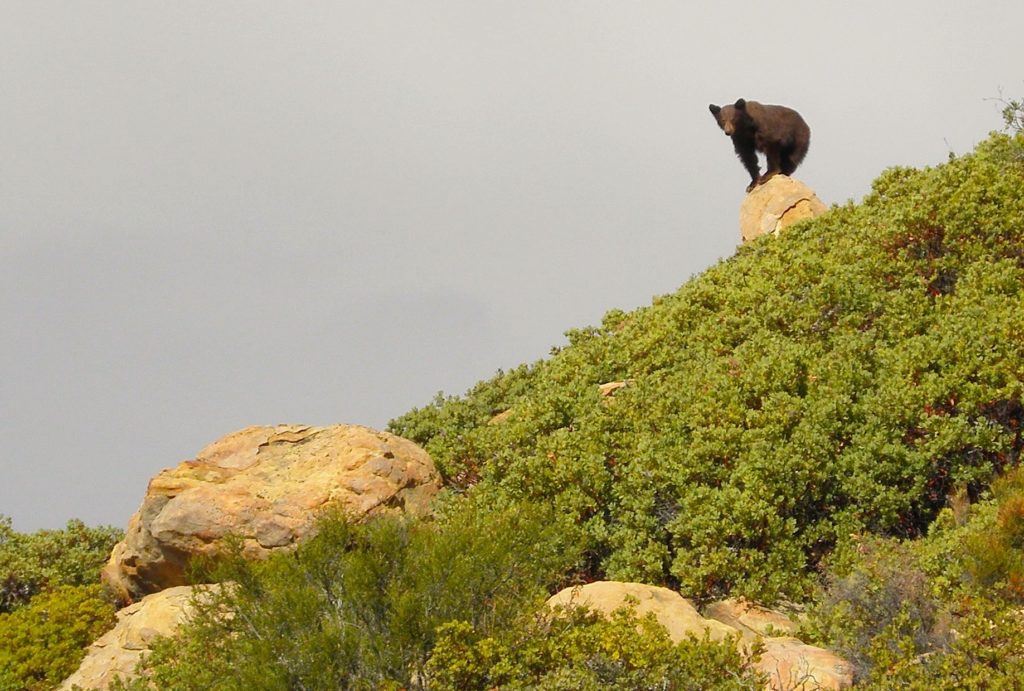
Ventura, Calif.—Wildlife and conservation groups throughout the region are voicing opposition to two lawsuits filed last week challenging the county’s recently-enacted wildlife corridor ordinance. The first suit was filed in Ventura County Superior Court on April 25 by the Coalition of Labor, Agriculture, and Business, which typically lobbies on behalf of developers and industries against safeguards for environmental and public health. The second suit was filed the same day by the California Construction and Industrial Materials Association, a Sacramento-based lobbying organization for mining companies.
The ordinance—crafted by stakeholders over the course of two years and passed by the Board of Supervisors last month—includes a series of measures designed to protect the pathways that wildlife use to travel between the Los Padres National Forest in the northern part of the county and the Santa Monica Mountains in the southern part of the county.
“Our region’s wildlife will only have a secure future if we take proactive steps now to give them room to roam,” said Jeff Kuyper, executive director of Los Padres ForestWatch, a nonprofit organization that participated in the development of the ordinance and led the final push to enact it. “These lawsuits threaten to undermine two years of hard work amongst landowners, scientists, wildlife advocates, and county planners, and ultimately places the fate of our region’s wildlife in grave danger.”
Hailed as the first-of-its-kind in the State of California, the wildlife corridor ordinance specifies the types of outdoor lighting, fencing, and development that could take place within designated wildlife corridors. These strips of land are used by deer, bobcat, mountain lions, foxes, coyotes, badgers, and other wildlife to travel between larger habitat areas. According to scientists, protecting a network of wildlife corridors preserves genetic diversity, prevents isolation and inbreeding, and allows wildlife to recolonize areas after wildfires.

“County residents strongly support the ordinance because it contains science-based measures to give mountain lions and other local wildlife a fighting chance as development pressure and climate change intensify,” said J.P. Rose, staff attorney at the Center for Biological Diversity. “These lawsuits are out of step with the will of the people and we are confident they will be rejected by the courts.”
The corridor ordinance enjoys broad public support and was crafted over the course of two years following several stakeholder and community meetings. More than 600 residents, representing every city within the county, submitted comments to the Board of Supervisors in support of the wildlife corridor ordinance.
Four cities—Thousand Oaks, Moorpark, Ojai, and Agoura Hills—submitted letters supporting the wildlife corridor ordinance. Several federal land management agencies also lent their support, including the National Park Service, the U.S. Fish & Wildlife Service, and the U.S. Geological Survey.
Prior to the Board of Supervisors’ approval of the ordinance last month, forty-one land and wildlife conservation organizations authored a letter supporting the wildlife corridor ordinance. Groups joining the letter included Los Padres ForestWatch, Center for Biological Diversity, National Parks Conservation Association, California Native Plant Society, Defenders of Wildlife, Ojai Raptor Center, Save Open Space/Santa Monica Mountains, Sierra Club, The Nature Conservancy, Ventura Citizens for Hillside Preservation, and Wildlife Care of Southern California among many other local and statewide organizations.
“Passage of this wildlife corridor ordinance established Ventura County as a leader in protecting the health of our diverse ecosystems and ensuring a future for animals who depend on them,” said Pamela Flick, senior California representative for Defenders of Wildlife. “To challenge these protections threatens the survival of local wildlife and reverses important progress in protecting critically habitat linkages for species movement.”







Comments are closed.